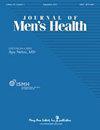Proper Use of the International Index of Erectile Function 5 (IIEF-5) Questionnaire in Patients Undergoing Transurethral Resection of the Prostate (TURP)
IF 0.6
4区 医学
Q4 Medicine
引用次数: 0
Abstract
Background : Our goal was to show how the interpretation of the IIEF-5 questionnaire can lead to a significantly different outcome and propose a modification of the possible responses of the IIEF-5 questionnaire to assess erectile function after transurethral resection of the prostate (TURP). Methods : The results of patients treated with TURP in a randomized clinical trial were analyzed under four scenarios characterized by what patients to include and how to codify the answers for statistical interpretation: scenario (A) only patients who reported sexual intercourse; scenario (B) all patients, recording zero response for patients without sexual activity as one more grade of the scoring scale; scenario (C) same as B but coding 0 as “99” (missing value); and scenario (D) all patients are included, but the zero response remains as 0 for patients who reported not having had sexual intercourse due to the “Inability to penetrate (enter) the partner due to penile flaccidity”, whereas zero response is coded as “99” in those patients reporting “Inability to penetrate (enter) the partner due to other causes”. Results : Eighty-four patients qualified for the analysis. The proportion of patients in each ED category was very similar among the four scenarios, except for the “Severe ED” category. At baseline, scenario B had 36.9% of patients categorized as “Severe ED”, scenario D 18.5%, and scenarios A and C 17.2% ( p < 0.01). This relative order remained constant in all postoperative visits. The differences in “Severe ED” rates were directly correlated with the inclusion of patients without sexual activity (higher “Severe ED” rate) and the codification of zero responses (when left as zero, they increase “Severe ED” rate, whereas when coded as 99 they are not included in the analysis and “Severe ED” rates decrease). Taking scenario D as a reference, we found a significant overestimation of “Severe ED” in scenario B up to 21.4% and a slight underestimation in scenarios A and B up to –15.7%. Conclusions : Using the IIEF-5 questionnaire with options 0 and 99 (scenario D) may improve the accuracy of detecting patients with “Severe ED” in the postoperative period of TURP. Clinical Trial Registration : NCT03936244 (https://clinicaltrials.gov/ct2/show/NCT03936244).经尿道前列腺切除术(TURP)患者正确使用国际勃起功能指数5 (IIEF-5)问卷
背景:我们的目的是展示对IIEF-5问卷的解释如何导致显著不同的结果,并提出对IIEF-5问卷的可能反应的修改,以评估经尿道前列腺切除术(TURP)后的勃起功能。方法:对一项随机临床试验中接受TURP治疗的患者的结果进行四种情况下的分析,包括纳入哪些患者以及如何编纂答案进行统计解释:场景(A)仅报告性交的患者;场景(B)所有患者,无性行为的患者记录零反应,作为评分量表的一个等级;场景(C)与B相同,但将0编码为“99”(缺失值);场景(D)包括所有患者,但由于“阴茎无力而无法插入(进入)伴侣”而报告没有性交的患者的零反应仍然为0。而在那些报告“由于其他原因无法进入伴侣”的患者中,零反应被编码为“99”。结果:84例患者符合分析条件。除“严重ED”类别外,四种情况下各ED类别患者的比例非常相似。基线时,场景B有36.9%的患者被归类为“严重ED”,场景D 18.5%,场景A和C 17.2% (p < 0.01)。这一相对顺序在所有术后访问中保持不变。“严重ED”率的差异与纳入无性行为的患者(“严重ED”率较高)和零反应的编码(当为零时,“严重ED”率增加,而当编码为99时,“严重ED”率降低)直接相关。以情景D为参照,我们发现情景B对“重度ED”的高估高达21.4%,而情景a和情景B对“重度ED”的低估高达-15.7%。结论:使用选项0和99的IIEF-5问卷(场景D)可以提高TURP术后“重度ED”患者的检测准确性。临床试验注册:NCT03936244 (https://clinicaltrials.gov/ct2/show/NCT03936244)。
本文章由计算机程序翻译,如有差异,请以英文原文为准。
求助全文
约1分钟内获得全文
求助全文
来源期刊

Journal of Men's Health
Medicine-Urology
CiteScore
0.70
自引率
28.60%
发文量
153
审稿时长
10 weeks
期刊介绍:
JOMH is an international, peer-reviewed, open access journal. JOMH publishes cutting-edge advances in a wide range of diseases and conditions, including diagnostic procedures, therapeutic management strategies, and innovative clinical research in gender-based biology. It also addresses sexual disparities in health, life expectancy, lifestyle and behaviors and so on. Scientists are encouraged to publish their experimental, theoretical, and descriptive studies and observations in as much detail as possible.
 求助内容:
求助内容: 应助结果提醒方式:
应助结果提醒方式:


